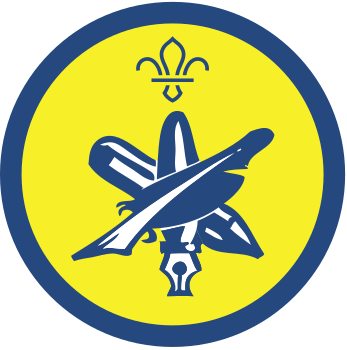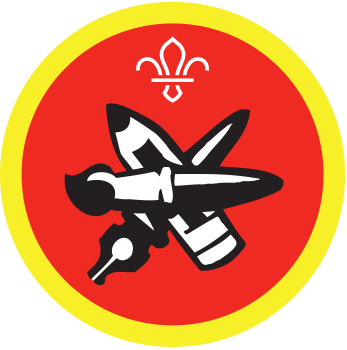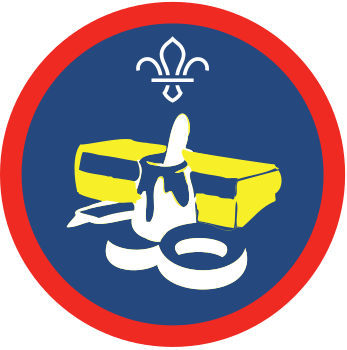
Create Frida’s four corner masterpiece
You’ll need
- Scissors
- Permanent markers
- Paint
- Coloured pens or pencils
- Craft materials (for example, tissue paper, pipe cleaners, stickers)
- Glue sticks
- Masking tape
- Something to protect surfaces (for example, newspaper or tablecloths)
- PVA glue
- Rulers
- Tissue paper
- Pens or pencils
- Paint brushes
- Thick card
- Mirrors (optional)
Before you begin
- Use the safety checklist to help you plan and risk assess your activity. Additional help to carry out your risk assessment, including examples can be found here. Don’t forget to make sure all young people and adults involved in the activity know how to take part safely.
- Make sure you’ll have enough adult helpers. You may need some parents and carers to help if you’re short on helpers.
This activity could be run for International Women’s Day, which is celebrated on the 8 March every year. International Women's Day (IWD) is a global day celebrating the social, economic, cultural and political achievements of women. The day marks a call to action for accelerating women's equality. It can also be a great way to introduce young people to inspirational women. International Women's Day has occurred for well over a century, with the first IWD gathering in 1911 supported by over a million people. Find out more about Girls and Women in Scouts.
Planning this activity
- You may want to set up several art tables, each with a different art technique, for young people to move between.
- You may want to set up the craft and paint items, tables and chairs before this activity.
- You could run this activity over two sessions, with one week for drawing the portrait and one week for painting it. An adult volunteer could apply the masking tape in-between the two sessions, too.
Who’s Frida Kahlo?
- Gather everyone in a circle.
- Ask if anyone has heard of Frida Kahlo and who she is or what she did. Choose a few people to answer if anyone has put their hand up.
- Explain to the group that Frida Kahlo was a painter, famed for her eye-catching artwork and self-portraits.
- Read out Frida’s story.
Frida Kahlo was a painter who lived from 1907 to 1954. She was born in 1907 in Mexico City. Her art was inspired by the nature and history of her home country and culture. Her paintings often include bright colours and mix realism with fantasy. Kahlo suffered from polio since childhood and was also involved in a bus accident.
Frida was going to study medicine but, too ill to continue, took up painting in her long recuperation. During her recovery, she honed her artistic skills with lots of self-portraits. Between the 1970s and the 1990s, Kahlo's work grew in popularity, and she is now an internationally celebrated artist.
Frida Kahlo is one of the most important artists of modern times. She was famous for painting self-portraits, but she was particularly famous for painting women as strong people. In her self-portraits, Frida exaggerated her monobrow and moustache which were less obvious in photos of her.
Kahlo used lots of bright colours and tropical flowers in her paintings, since it reinforced the vibrancy of her Mexican, Spanish, and Hungarian heritage, of which she was very proud. Alongside exploring the human body in her work, she also liked to use lots of animals, such as dogs, birds, and monkeys.
Run the activity
- Everyone should take a piece of thick card or canvas board.
- Using a pencil, everyone needs to lightly draw a self-portrait onto the card. The portrait should fill up the page, reaching as close to the edges as possible. It can be in any style and as creative as possible. People could use a mirror if needed, too.
- Next, using a pencil and ruler, people should divide the card into four corners. To do this, draw two lines to form a cross, one vertically down the middle of the hard card and one horizontally across the middle of the card. This will divide the card (and the portrait) into four.
- Once finished, it’s time to start decorating each square differently, using any four different art methods. Each of the four squares needs to be completed using a different art method to build up the portrait.
- Remind people to think about using bright colours, elements and styles from you’re their culture, and exaggerating certain facial features, just like Frida did.
- We’ve listed some ideas for different art methods to use are listed on this page, however everyone’s encouraged to use their imagination to create their artwork.
- Once finished, put the artwork somewhere safe to dry and tidy up.
- After the art has dried, remove the masking tape carefully to reveal your portrait.
- Watercolour paint
- Acrylic paint
- Pastels
- Felt tips
- Pencil crayon
- Collage
- Tissue paper
- Dipping cotton buds into paint to create dots
- Wax crayons
- Fingerprinting
- Using clean household objects to print, such as toothbrushes or forks
- Using buttons, pom poms, sequins, feathers or stickers
- Gluing down string or thread and painting it
- Using nature or natural objects
- Using paper straws of different colours
Reflection
In this activity, we all tried different art methods. How did everyone find drawing their portraits? Were you inspired by Frida or any other artist?
If you chose to, how did you incorporate bright colours, exaggerate any features, or include any inspiration or styles from your culture within your image?
This activity was all about trying different painting techniques, too. What techniques did you use? What was your favourite method? Did anything turn out differently to how you thought it would?
Safety
All activities must be safely managed. You must complete a thorough risk assessment and take appropriate steps to reduce risk. Use the safety checklist to help you plan and risk assess your activity. Always get approval for the activity, and have suitable supervision and an InTouch process.
- Sharp objects
Teach young people how to use sharp objects safely. Supervise them appropriately throughout. Store all sharp objects securely, out of the reach of young people.
- Glue and solvents
Always supervise young people appropriately when they’re using glue and solvent products. Make sure there’s plenty of ventilation. Be aware of any medical conditions that could be affected by glue or solvent use and make adjustments as needed.
- Rubbish and recycling
All items should be clean and suitable for this activity.
To make this harder, you could make the portrait bigger or divide the artwork into more sections, such as 6, and use more artistic techniques. To make this easier, you could divide the image into 2 halves and just use 2 artistic techniques.
If anyone needs help or struggles with fine motor skills, give them the opportunity to work in pairs, with a young leader or an adult volunteer. Alternatively, swap out the items for something easier to handle. If anyone needs support in using craft items, allow them to work with someone else who can help them.
People who struggle with making choices could find all the options a bit overwhelming, so they might need extra support or to work with a young leader/volunteer to be able to create their artwork. Anyone who struggles with creating a design could be given paper with a pre-drawn image that they can glue or stick craft materials onto.
All Scout activities should be inclusive and accessible.
You could create a single bigger image, drawn across lots of pieces of paper, with people decorating one each using a different method. You could then bring them all back together to create a wonderful big piece of art, making up one image.
Let young people choose the art techniques they want to use and have the freedom to be creative.


